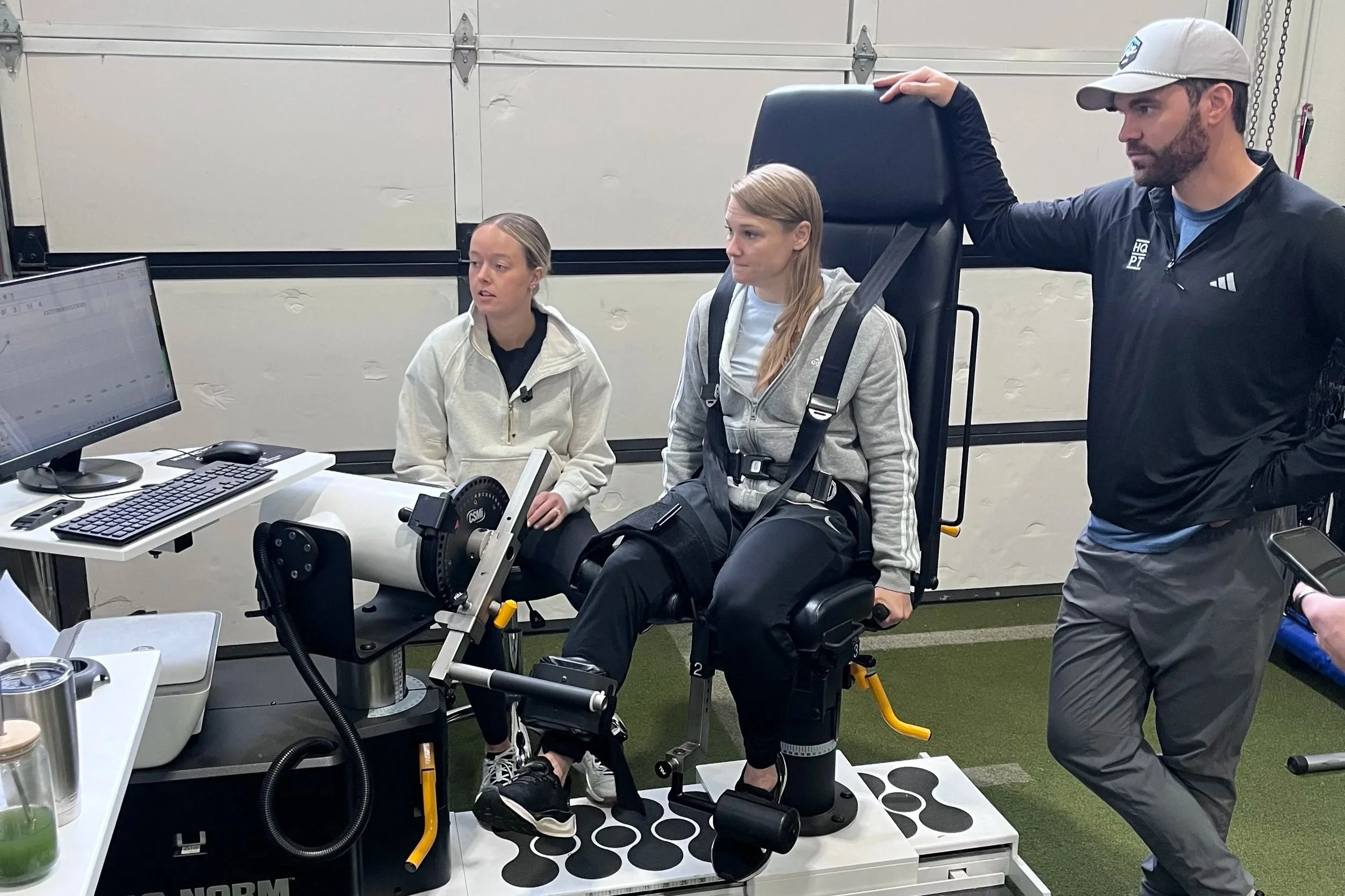I Intentionally Injured a Professional Athlete...
I intentionally injured a pro athlete...
Ready for a fun story?
Earlier this year, we tested a professional athlete using the Humac Norm isokinetic machine—comprehensively profiling knee strength, power, and torque at multiple speeds.
We wanted a full picture of right vs. left knee function. While reviewing the data, we noticed something interesting: A dip in force output between 60–90° of knee extension at 60°/sec in one knee—suggesting the athlete might be unconsciously protecting their patellar tendon from higher load.
Here’s the kicker: No pain. No symptoms. No red flags during training or competition. Just a hidden inefficiency—something "below the waterline" the athlete couldn't feel.
So… what do we do with that?
We had two options:
- Leave it alone and carry on
- Address it—and knowingly provoke the tendon
We chose option 2.
Why?
The athlete and clinician had a high level of trust
The offseason window gave us time to address, irritate, adapt, and resolve the issue before competition
Here's what we did:
We designed a patellar tendon loading protocol using the 1080 Sprint in isokinetic mode—to dial in stimulus at the right intensity. Even for a pro athlete, the work was shockingly hard: high effort, high intention.
Within a week, the tendon got irritated (just as expected). But instead of backing off completely, we leaned in strategically:
Monitored symptoms closely
Subbed in isometrics and other load types
Collaborated tightly with the performance coach
Kept the athlete on a thoughtful load/recover/adapt plan
By week 5, pain was down. Function was up.
We saw improvements in:
- Isokinetic testing
- Force plate output
- Functional measures like sprint speed and acceleration
Takeaways:
- Pain isn’t always bad – With intention and planning, sometimes we need to push into discomfort to drive adaptation.
- The human body is wildly adaptable
- “Below-the-waterline” metrics—the ones athletes can’t feel—are often the most valuable when designing performance and rehab interventions

